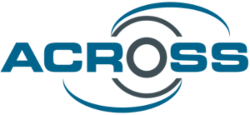HOME > ABOUT ACROSS > BENEFITS
Benefits
The ACROSS expected benefits are:
- User journey: Demonstrate the public servants that the use of the ‘User Journey’ approach for the definition of (digital) public services improves the usability and understandability of the different steps that a citizen or other relevant stakeholders must execute, in this case, in the life event ‘moving’.
- Connectors: Demonstrate that due to the data harmonization tools that allow to ‘translate’ the digital public services in the legacy format to the format recommended by the EIF, the interoperability at cross-border in the different dimensions (technical, semantic) is achieved, so these can be used both by the public servants, businesses and the citizens.
- Virtual Assistant: Show the added value of using a Virtual Assistant when making a transaction in the digital public service that guides a citizen in the different steps can solve potential problems or questions that the citizen may face. The support for speech communication and multiple languages will enhance the interaction of the citizen with the public service by improving accessibility and lowering potential language barriers the citizen may encounter.
- ACROSS platform: Demonstrate the potentiality of an integrated ICT platform that is prepared to interoperate with the SDG implementation, as well as compliant with the EIF vocabularies. Show also that ACROSS is modular enough to be able to integrate external services coming from the private sector.
- Mobile and web app: Show the advantages of using a one-stop-shop application, web or mobile, that allows the users to carry out multiple transactions in several countries, without having to enter into the multiple websites of the public services institutions relevant to said service.
- ACROSS ecosystem: Demonstrate the potential of the ACROSS ecosystem and the resulting web and mobile applications for the implementation of an interoperable, user-centric cross-border digital public service, compliant with the European regulations and recommendations, following a User Journey approach.
- Data Governance framework: The data governance framework built in the project gives the control back to the citizens on how their personal data is used, by whom and for what purpose. Using easy to understand metrics and visualizations, citizens can easily adapt each data type (e.g. documents, forms, and so on) to their specific privacy preferences, while better understanding the value of their data and the privacy/utility trade-off they are entering.
- Co-sessions: Show the relevant stakeholders that participating in co-creation, co-design, co-delivery sessions has an impact on the definition of the user journey and the implementation of a digital public service, in this case, in the life event ‘moving’.
- Impact analisis: Present the relevant stakeholders the lessons learned, benefits, risks and potential of the use of transformative approaches and solutions for the delivery of the cross-border mobility service. Show the impact that data governance has on the delivery of cross-border services.
